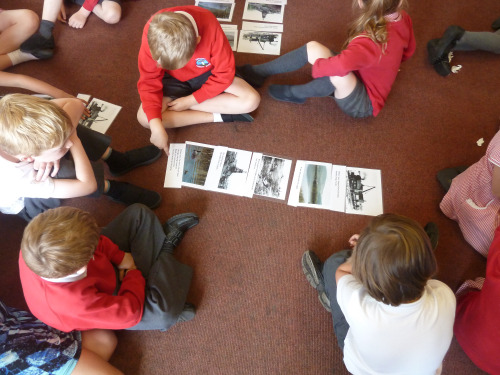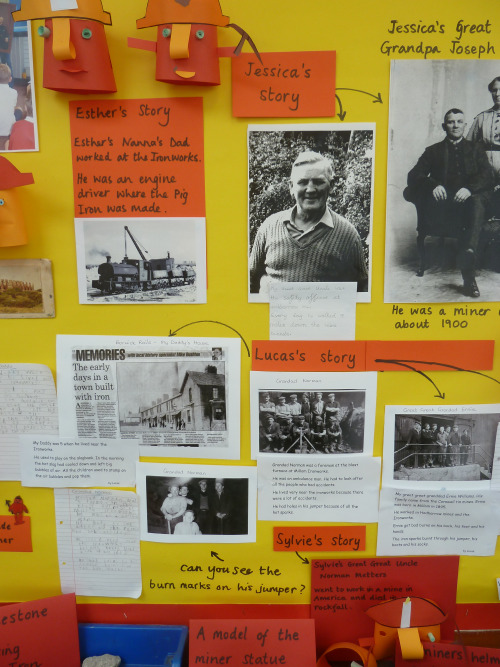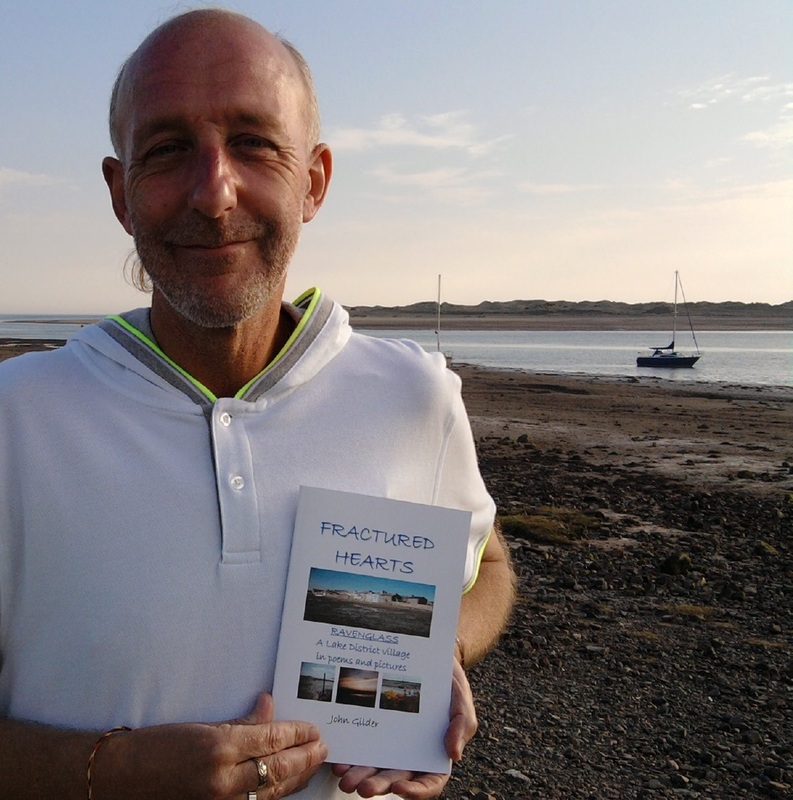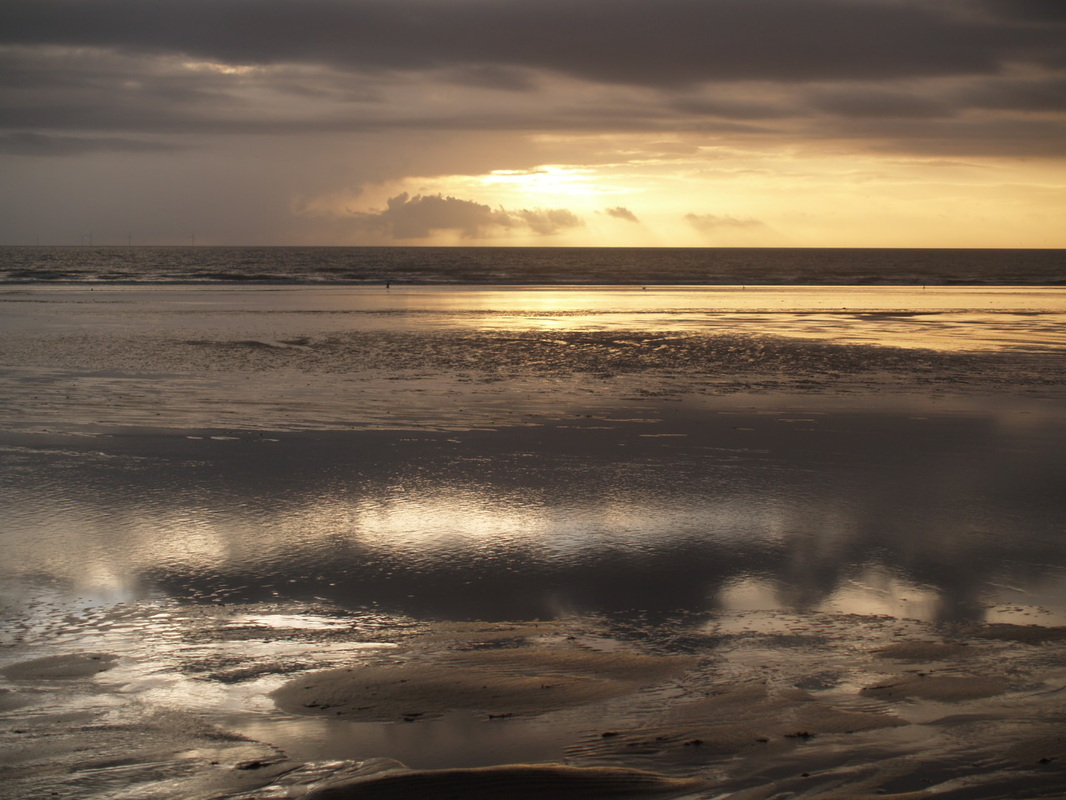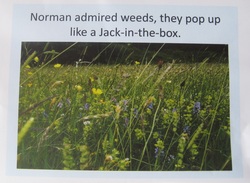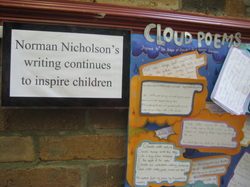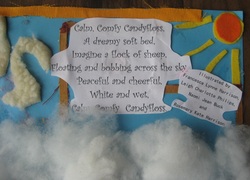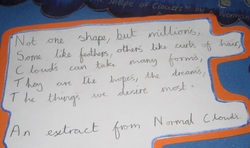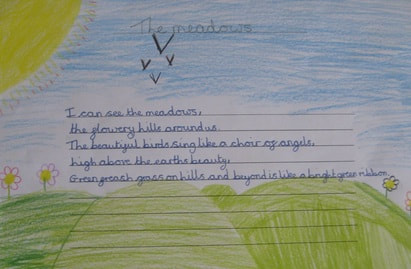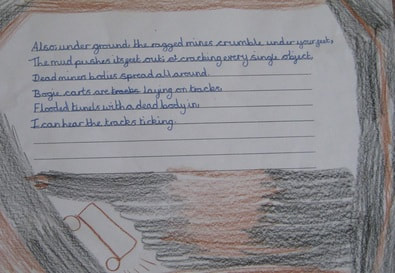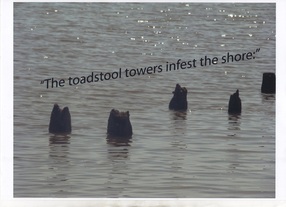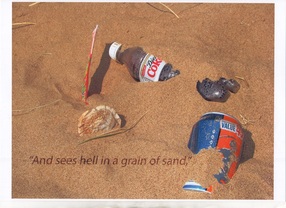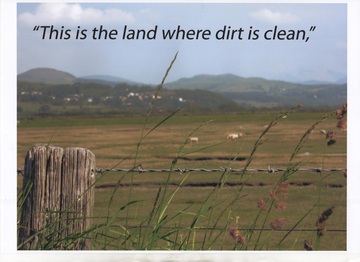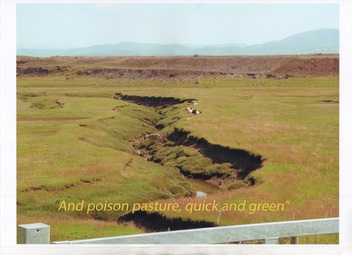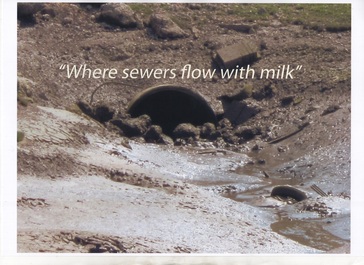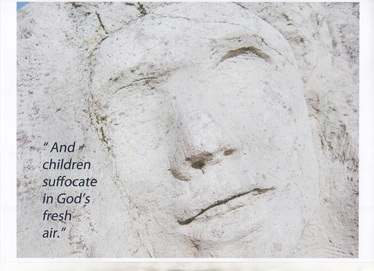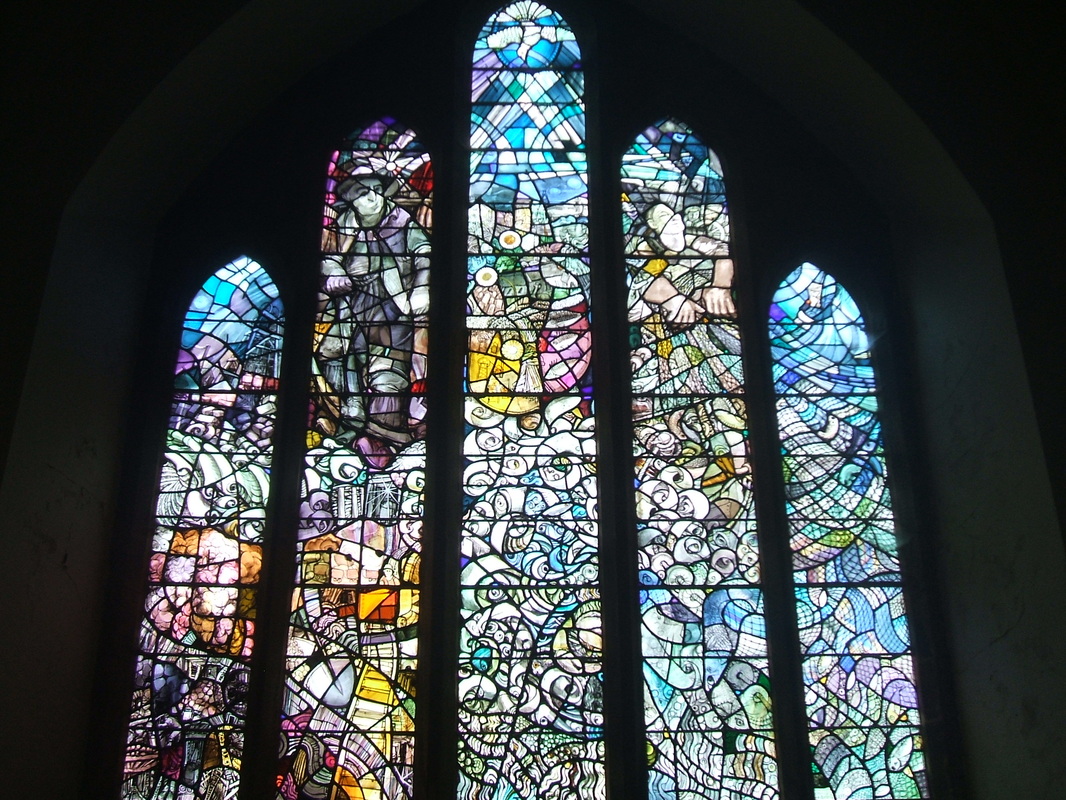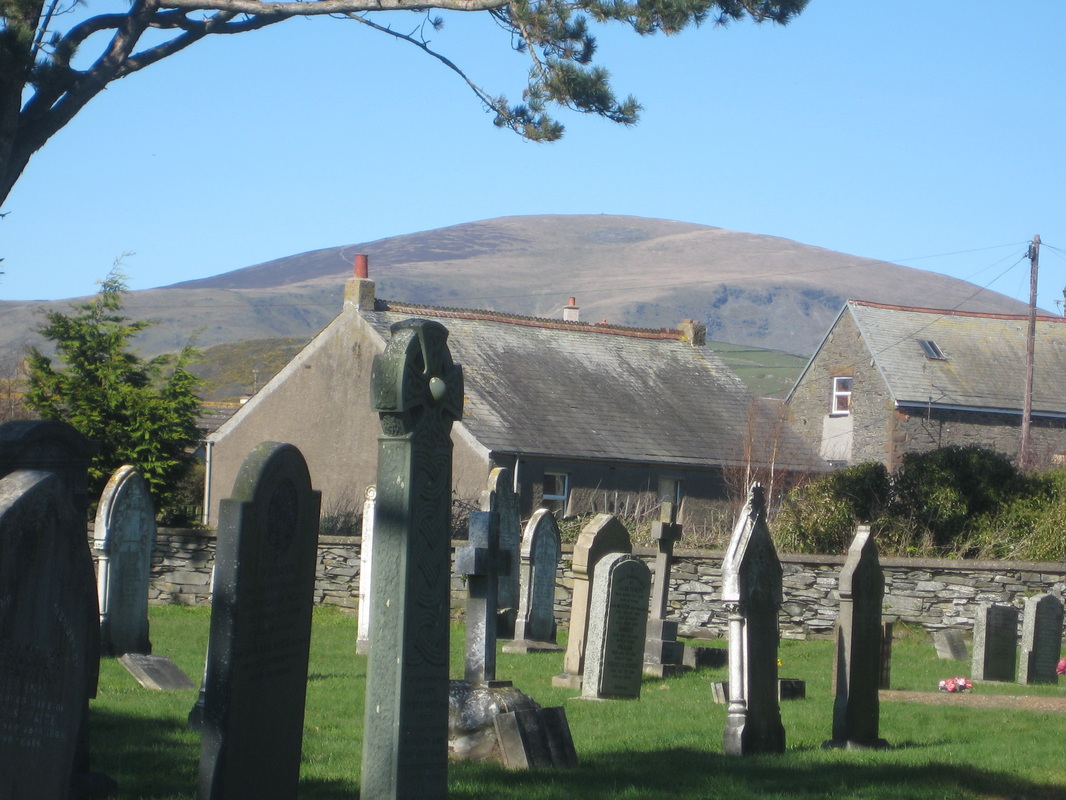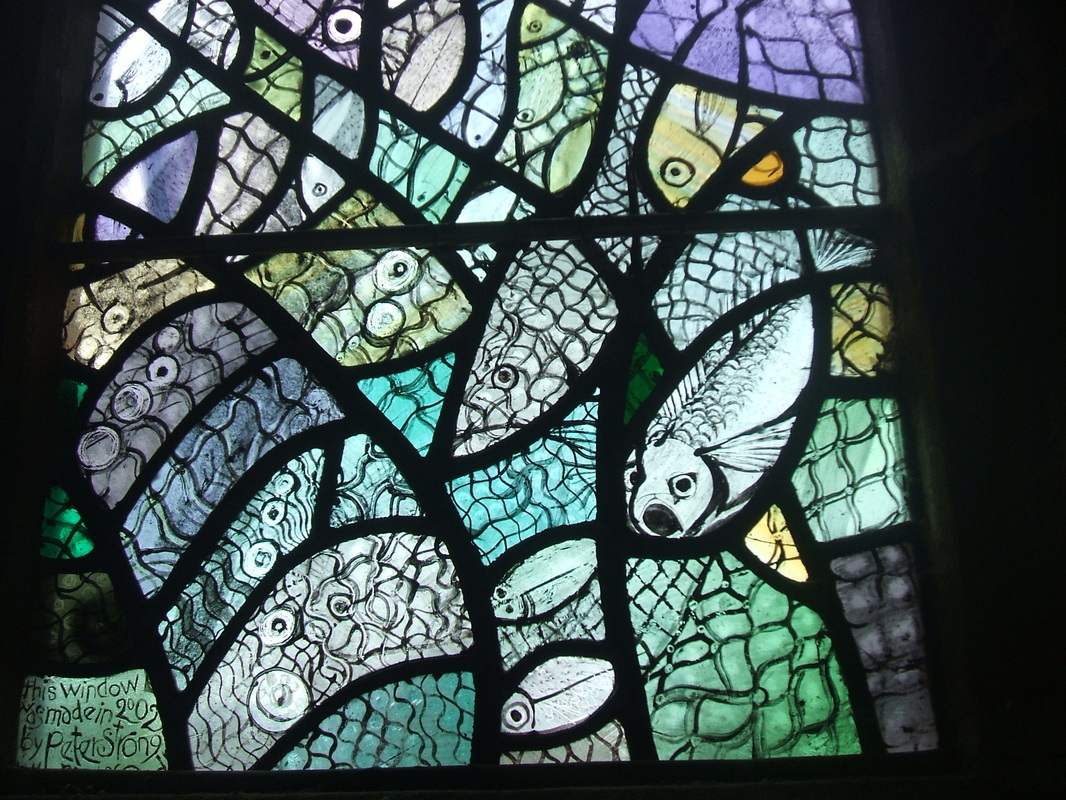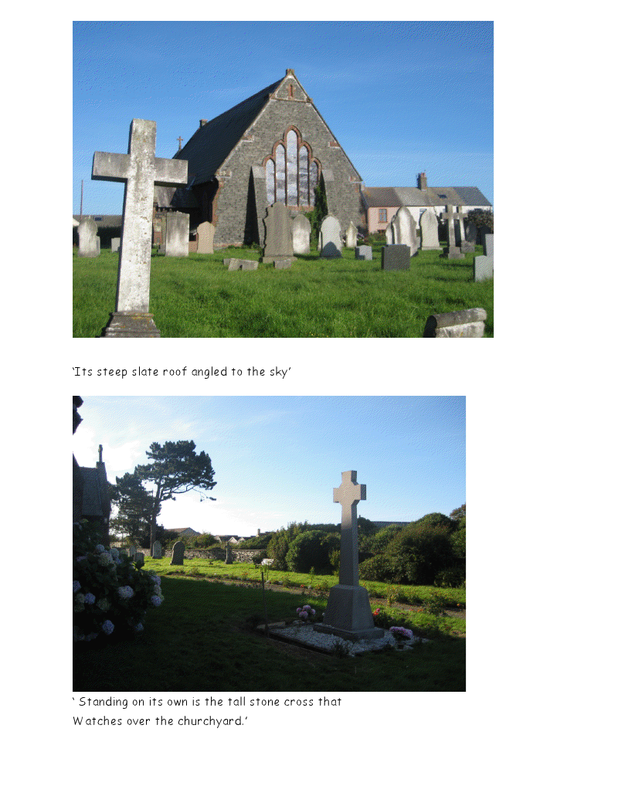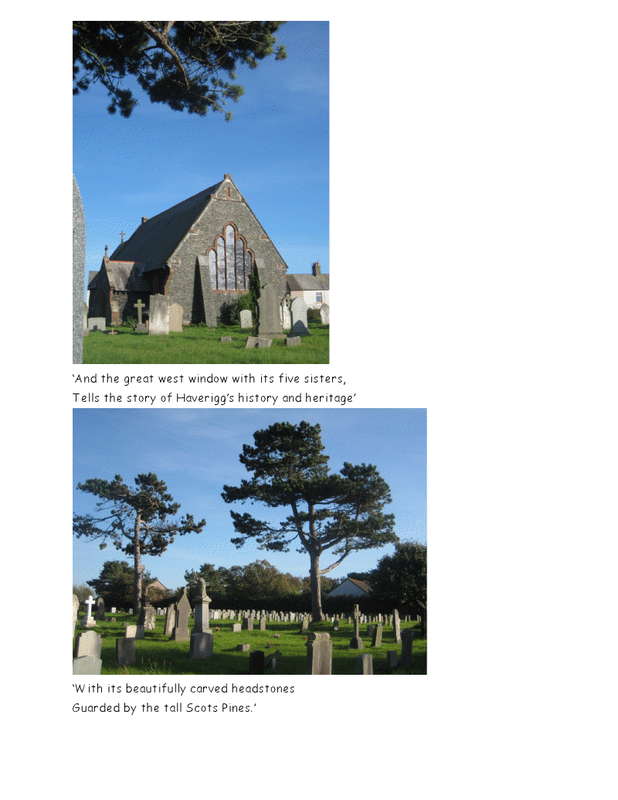Our page!
This is where we display poetry and other writing and images contributed by us, NN enthusiasts.
Do send in some writing or photography of your own.
Do send in some writing or photography of your own.
'Hodbarrow Flooded' inspires Year 2 pupils at Haverigg
|
The children in Year 2 at Haverigg Primary used Norman Nicholson’s poem Hodbarrow Flooded as the stimulus for their summer term project, 2016. This included not only local history but literacy, art and developing speaking and listening skills, which they achieved through asking questions of their families for more information about how Millom and Haverigg used to be when the mines and ironworks were both still open in the 1960’s.
You can see how they went about it on their own blog HERE |
|
Mrs Kent, teacher of Year 2, chose the NN poem ‘Hodbarrow Flooded’ because she thought it would help the children to understand how the area around Millom and Haverigg has changed since the mine and ironworks closed. The content of the poem also includes some of Nicholson’s own family history which was a useful perspective to include later in the project. The content was also handled sensitively with such young children as the fatal accident of Nicholson’s uncle is mentioned in the poem.
First the teacher of Year 2, Mrs Kent,organised a visit to Millom Discovery Centre and Millom Ironworks Nature Reserve for the children to be able to see first hand some of the original artefacts connected to the industrial history of the town of Millom including the reconstruction of a mineshaft from Hodbarrow mine. Then Sue Dawson and Nancy Green visited the class to share their own family histories because they both have families who have moved into the area a long time ago to find work. The children had also prepared their own questions for their two visitors about local and family history in order to practise their speaking and listening skills. Mrs Kent then shared the poem with the children and used a series of photographs of local scenes, Hodbarrow miners etc to allow them to look more closely at the lines of the poem and be able to match the words with the images. Next Sue Dawson visited the class once more to talk about Norman Nicholson and why he is famous, what he did, how important Millom was to him and also how his home town and people inspired him in his writing. They were told he was described as an ‘intensely observant poet’ so for their literacy activity they practised their skills of observation by looking at everyday objects and describing them in different ways. The children were encouraged to ask their families for more information about Hodbarrow and Millom Ironworks and the response was wonderful! The stories sent in were included on the classroom display as you can see in the Year 2 class blog link. Then the children began their own creative writing focusing on Hodbarrow Now and Then. They used the first verse of NN’s poem as the framework for their writing and added extra verses describing how they see Hodbarrow Lagoon now and what it must have been like before when the miners were working underground. The results of the poetry writing can be seen on the class blog. Finally, because they had enjoyed learning about Millom’s history so much the children continued with their project by building models of the mines, ironworks, railway, harbour etc to reconstruct the industrial landscape of the past. A hugely enjoyable way of using their recently acquired local history knowledge. See the class blog for their fantastic results! Mrs Kent was amazed at the success of this project. By keeping Nicholson’s poem as the main stimulus she was able to draw in many learning connections with other curriculum areas which enthused and inspired the children. Mrs Kent was also really pleased at the response from the families of the children and found this project gave them all a real sense of the strength of the community links which still exist to Millom’s industrial heritage. posted 17/10/16 |
Black Combe Junior School: Old Man at a Cricket Match
Photographic project by children aged 8 and 9 from Black Combe Junior School, interpreting the poem Old Man at a Cricket Match
posted 19/5/15
Tragedy
|
Evil
sat side-by-side with good
As dew dropped to the ground From the bright, awakening leaves in this Eskdale wood. In this innocent June On an innocent day, Cumbria would witness tragedy soon. Twelve birds flew high and silent this way Above this quiet Eskdale wood And one Bird lay still. Who could...? Dew was all around in this Eskdale wood As if the trees bled. Dew dropped to the ground in this Eskdale wood; Tears for the dead. John Gilder 2012 posted 17/5/2015 |
|
Ravenglass Sea Wall
|
There's a crevice in the sea wall on the Ravenglass shore
Which the tide sniffs out with its salty nose And makes its distinctive call. It comes with a roar, all bluff and bluster; Seeks out the crevice with all its muster And enters with a swash and a glug, Before retreating with a gurgle. It repeats its entry with rapidity and consistency. A little further up the sea wall, Close to where un-tide washed steps lead down from the main street And onto the dishevelled shore - Unlike those at the south end of the shore at the back end of the old Ship Inn, Which are worn down the middle By the salt-sodden soles of countless souls of sailors, seamen and smugglers - That same tide crashes Onto the concrete and rose-flecked Eskdale granite with a crack, Like an anger-driven slap across the face. A speck of granite exits the sea wall and is deposited on the estuarine shore Amongst the salt-eroded clumps of tatty turf Littered with Littorina and the dead bodies of salt-starved Carcinus maenas And floundering Rhizostoma. Each new speck of granite adds to the silt of the shore And each new speck detracts from the strength of the wall. There is another sea-worn flight of steps leading down from This beautiful shambles of a sea-wall with an upturned brick Amongst its pile; Imprinted boldly in this brick is WHITEHAVEN. The tide is relentless for a while, But then it tires Before retreating to the wider sea. All is calm now. Feel the release; the calm, no bluff nor bluster And the tide goes to sleep. Impotent tides just about reach the sea wall; They don't come with a crash or a slap or a bang. They come with a whimper; No swash, no gurgle, no glug. Hardly a splash - and not one speck of granite added to the silt. John Gilder 2015 posted 22/2/15 |
Silecroft Shore
The quick ring-plover shifts and disappears
Like a puddle in the sun, and the stones stay
Perfect and purposeful, acknowledging no way
Other of being than this.
(from Silecroft Shore, pub 1948 in the 'Rock Face' collection)
photo of Silecroft beach by Charlie Lambert
posted Janury 29th 2014
Like a puddle in the sun, and the stones stay
Perfect and purposeful, acknowledging no way
Other of being than this.
(from Silecroft Shore, pub 1948 in the 'Rock Face' collection)
photo of Silecroft beach by Charlie Lambert
posted Janury 29th 2014
Poetry in Pictures: Haverigg Primary School, 2012‘In a Word’
This poem by Norman Nicholson is from the children’s anthology ‘The Candy-Floss Tree 1984’ and it provided the stimulus for Year 4 & 5 children at Haverigg Primary School to make creative links with the poem, IT, Photography and Art. Links to the local environment are also cleverly included in these images as you can identify the colours, shapes and textures of the beach, the countryside and of course Black Combe. The children have interpreted the poem in this sequence of images through the exciting medium of photography and computer technology. This has made Nicholson’s poem a relevant and exciting project for children in the 21st century! This project was part of the ‘Poetry and Pictures’ exhibition which was organised for local schools by the Norman Nicholson Society. posted 20/11/12 |
|
Primary schools' work, summer 2012
Art work from four Cumbrian primary and junior schools, inspired by Norman's poetry, went on display at Millom Discovery Centre. Posted July 19 2012, updated July 23 2012
These two Poetry Posters (below) have been made by Year 5 from St James's Catholic Primary School, Millom. Their teacher is Mr J Cullen who tells us that their poetry was inspired by Nicholson's 'Hodbarrow Flooded' which tells of the death of his Uncle Jack who was a miner. Mr Cullen adds that they used the contrast between the beautiful, scenic Millom of today and the harsh, difficult life of its industrial past to write their own poems.
The class's poems are on display in the Norman Nicholson Room and also collected together in a book so that all the children's writing can be enjoyed by visitors to the Centre.
The class's poems are on display in the Norman Nicholson Room and also collected together in a book so that all the children's writing can be enjoyed by visitors to the Centre.
Millom School students interpret 'Windscale'
Students at Millom School created a photographic interpretation of Norman's poem 'Windscale.' The poem was Norman's response to the serious nuclear accident at the Windscale plant in October 1957. Read more about the accident here and watch part of a 2007 BBC TV investigation here.
The exercise was part of the 'Poetry in Pictures' initiative, designed to prompt local school students to engage with Nicholson's writing and interpret it in a visual way. Coming around the time of the nuclear explosion in Japan the choice of poem had special relevance. The teacher who worked with the pupils, Simone Faulkner, commented on how much they enjoyed the work. The photographs were displayed at the Society's autumn meeting in 2011 and are reproduced here by permission of the school. Link to the school website here.
The exercise was part of the 'Poetry in Pictures' initiative, designed to prompt local school students to engage with Nicholson's writing and interpret it in a visual way. Coming around the time of the nuclear explosion in Japan the choice of poem had special relevance. The teacher who worked with the pupils, Simone Faulkner, commented on how much they enjoyed the work. The photographs were displayed at the Society's autumn meeting in 2011 and are reproduced here by permission of the school. Link to the school website here.
|
Walking by St Luke's Church
A poem about Haverigg's beautiful Victorian church
By the pupils of Haverigg Primary School
By the pupils of Haverigg Primary School
|
Down St Luke’s lane stands a lonely church, Its steep slate roof angled to the sky. Look through the galvanized silver of the wrought-iron gate To see the graveyard paths embroidered with flowers. Standing on its own is the tall stone cross that Watches over the churchyard. High up, in the distance, from afar Black Combe watches just the same. Shining stained glass windows glisten in the sunlight, And the great west window with its five sisters, Tells the story of Haverigg’s history and heritage The story of the village and the people. Around the corner of the big entrance arch Hides the rusty, old, tower bell that used to call The local people to worship on their day of rest From working in the mines or on the seas. The sand stone window frames sit in the straight, slate walls And gaze out to the grave yard; With its beautifully carved head stones Guarded by the tall Scot’s Pines. Black Combe is the graveyard’s guardian, Watching over the rock and marbled, name-plated stones, Keeping St Luke’s church safe under its wing For all who pass or stay within. By the pupils of Haverigg Primary School |
This poem was created by the Year 6 teacher Chris Powell from Haverigg Primary School along with his class of Year 6 pupils. Find out more about the impressive work of these creative youngsters on their blog - click here
|
CLEO
Cumbria and Lancashire Education Online is a fantastic teaching and learning resource which expands the educational opportunities available to teachers and pupils. As part of the CLEO initiative, at Haverigg Primary School the children study the writings of Norman Nicholson and find new ways of gaining inspiration from his work, guided by staff who include NN Society committee member Sue Dawson and year 6 teacher Chris Powell. Watch and listen to what the new generation of young Cumbrians are producing by clicking here
